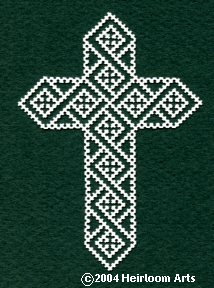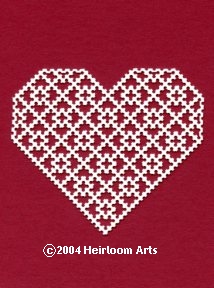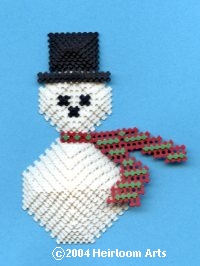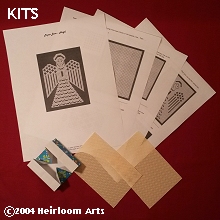Perforated paper has been used for embroidery for over 150 years, but for about 15 years in the late 1800s people also cut very delicate, lacy crosses from the paper.
Today perforated paper, heavy paper that is almost card stock and perforated with an even grid of 14 holes per inch, is a popular embroidery supply. It is perfect for ornaments and other free-standing items because once you cut it out, there is no more finishing.
In the 1850s and ‘60s it was also very popular for embroidery and was called “perforated cardboard.” Today at antique shops we often find small embroidered bookmarks or large, framed wall plaques embroidered with long stitches on perforated paper. The patterns were usually sayings such as “Watch and Pray,” “Home Sweet Home,” or “Bless This House.” There was much more variety in the paper then; it was available in 14, 15, 16, and 22 holes per inch.
Victorian ladies’ magazines show that by the 1860s women were cutting more than rectangular bookmarks from the perforated cardboard. Trinket boxes, picture frames, and wall pockets were made of geometric shapes stitched together and embellished with fancy embroidery and extra layers of the cardboard.
By the 1870s adventurous women began to eliminate the embroidery and to cut the embellishments into the perforated cardboard itself. The results were very delicate and lace-like. Though embroidered cardboard examples abound today, the cut work is quite uncommon.
Godey’s Lady’s Book, The Peterson Magazine, and Demorest’s Monthly Magazine all showed examples of perforated-card work from about 1862 through 1879. There were three types of the cutwork. The most common is the flat piece with patterns cut out. Next is the layered technique, where shapes of decreasing size are cut and glued in layers to form three-dimensional peaks. Least common of all are the fully three-dimensional constructions, including some spectacular houses found today in museums.
Virtually all the Victorian patterns are religious, and in fact, most are crosses. The religious theme is consistent with the mottos in the embroidered pieces from the earlier decades, and the cross works well with the grid created by the perforations.
The patterns on this website come from pieces that I have seen in museums, from the 1870s ladies’ magazines, and from my own imagination.








